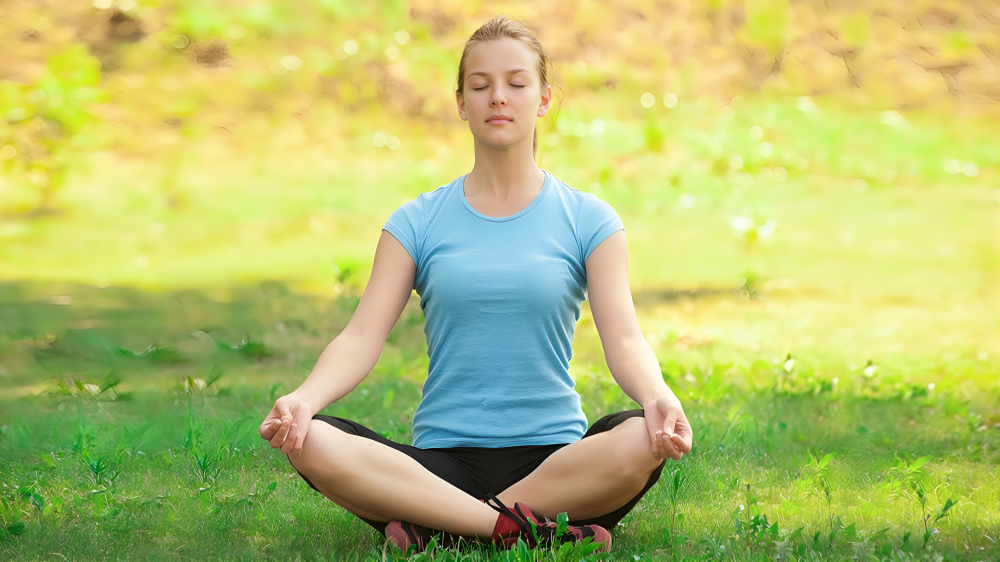
What is Plavini Pranayama?
Plavini Pranayama, a form of yogic breathing, involves sipping lots of air inside and retaining it in the stomach for a certain period. The word “Plavini” has been derived from the Sanskrit word “Plavana,” which means “to float” or “to swim.” If the practice is done right, then that body becomes light as if one can swim on water. That is different from any other pranayamas; it works on swallowing the air and creates some buoyancy effect.
How to Do Plavini Pranayama
Find a Comfortable Space: Choose a quiet place where you won’t be disturbed. You may sit cross-legged on the floor or on a chair with your feet flat on the ground. Keep your back straight to allow for easy breathing.
Relax Your Body: Close your eyes and take a few deep breaths. This helps calm your mind and prepare your body for the practice.
Begin Sipping Air: Pucker your lips and start sipping air, as if through a straw. Pay attention to the way your lungs, and then your stomach, begin to fill with air. If this feels just a bit odd the first time, rest assured that it will become far more normal in time.
Swallow the Air: Visualize swallowing as you are taking in air through your mouth. You are not swallowing, per se, just drawing that air down into your diaphragm.
Hold the Air: Following inhalation and “swallowing” of the air, hold your breath for as long as it feels comfortable. Do not strain or force yourself beyond comfort, especially as a beginning practitioner.
Expel the Air: Slowly exhale through the nose allowing all air to escape. Observe the contraction of the stomach and chest as air is leaving the body.
Repeat: You may repeat this process for 3-5 rounds, increasingly lengthening the duration as you grow comfortable with the technique.
Benefits of Plavini Pranayama
Improves Digestion: By increasing the quantity of air in the stomach, Plavini Pranayama stimulates the digestive organs to function well. It helps reduce bloating and indigestion and keeps your digestive system in order.
Boosts Mental Clarity: Holding the breath increases the oxygen supply to the brain, helping to clear your mind and enhance focus. This can be particularly beneficial when you need to concentrate or feel more alert.
Relaxation: Like all pranayama exercises, Plavini Pranayama has the tendency to activate the parasympathetic nervous system. The nervous system is responsible for the ‘rest and digest’ activities. Hence, this can be effective in reducing stress and anxiety by soothing the mind.
Lung Health: It strengthens the respiratory system if the pranayama is done on a regular basis. Complete involvement of the lungs during such a pattern of breathing automatically encourages and develops greater lung capacity after some time.
Prana is the flow of life force energy traveling through the body, and it is believed that Plavini Pranayama enhances this flow.
Mediation Helper: This breathing can help prepare the mind and body for meditation by soothing the nervous system and focusing. It sets a peaceful tone, making it easier to slip into a meditative state.
It’s here Moorchha Pranayama How to do it and what are the Benefits
FAQs
Q: Is Plavini Pranayama safe for everyone?
A: Generally, yes, but it’s always wise to consult with a healthcare provider or a yoga professional, especially if you have any respiratory issues, heart conditions, or are pregnant.
Q: How often can I practice Plavini Pranayama?
A: You can do it daily or frequently during the week, whatever that feels comfortable with you and fits your schedule. Consistency is the keyword for deriving benefits.
Q: Does Plavini Pranayama help in the management of stress?
A: Most definitely! This pranayama facilitates relaxation and reduces stress. A great tool to have for people suffering from anxiety problems and also for overall mental health improvement.

